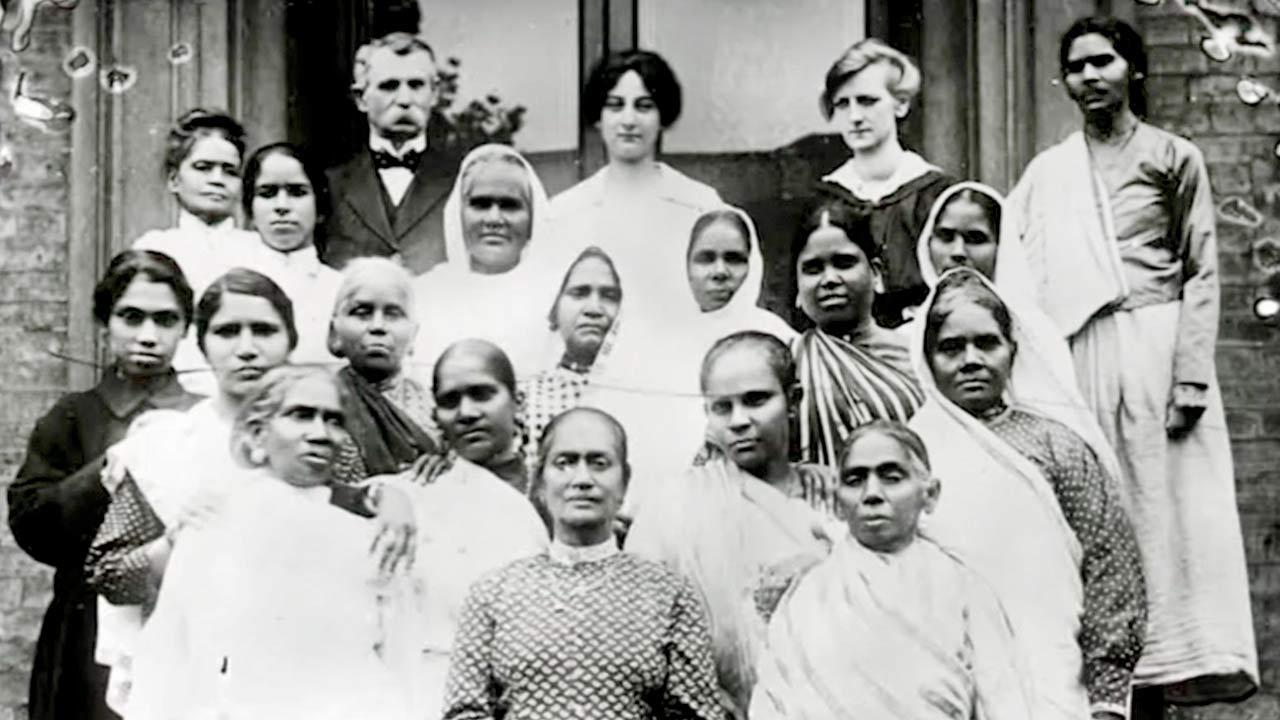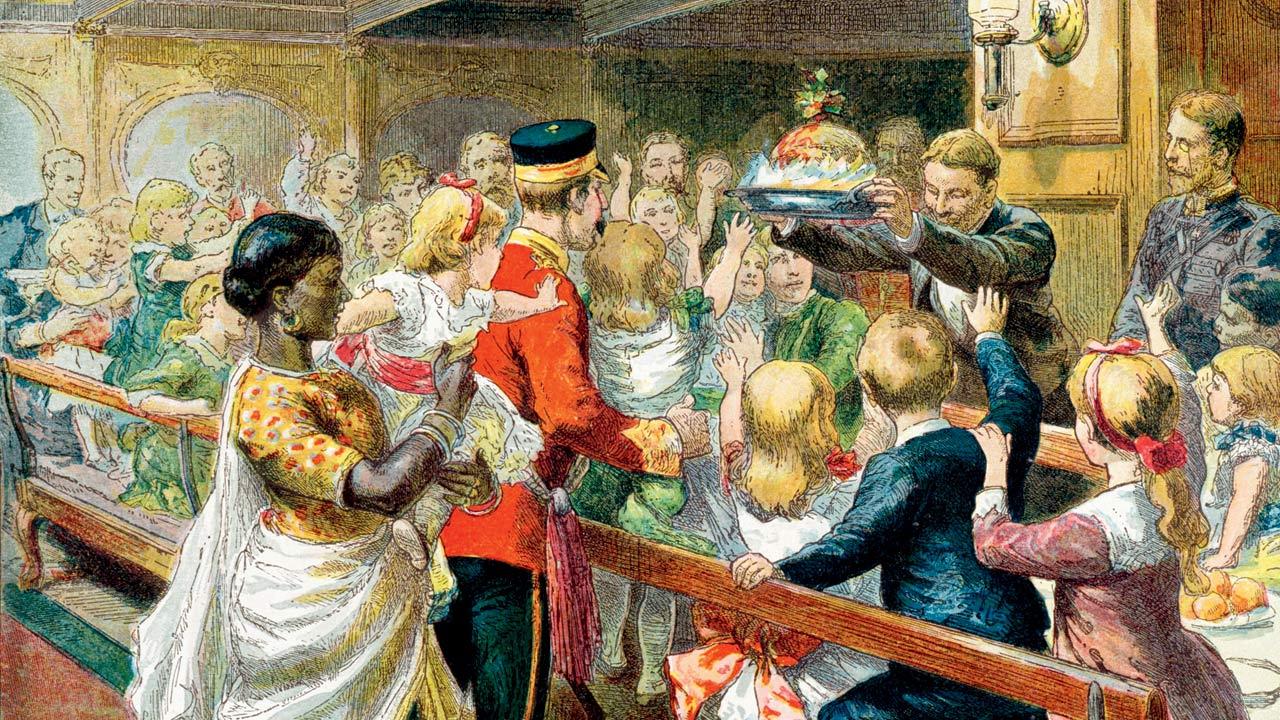A historian-author has spent the last decade stitching together stories of the travelling ayahs who served colonial families on sea, only to be abandoned on foreign land. Her latest book looks at what made them critical to the resilience of the British imperial rule

Travelling Ayahs at Ayah’s Home. Pic Courtesy/London City Mission
One of the most rewarding aspects of being a historian, says Dr Arunima Datta, is going into long-neglected archives and disappearing into historical rabbit holes. “They often lead to new and exciting research paths.” For the author and professor of Asian and British Empire history, the discovery happened in 2012, while she was undertaking archival research in Arkib Negara, Kuala Lumpur for a dissertation on Indian coolie women in British Malaya. It’s here that she stumbled on a Labour Department file, which discussed how an elderly coolie woman could easily be employed as an ayah (nanny) for a planter’s children.
ADVERTISEMENT
“The image of an old coolie woman, who could no longer accurately tap rubber trees; whose hands were probably rough from carrying pails of latex and handling knives for weeding and tapping, suddenly becoming an eligible recruit as a caregiver for the delicate body of a planter’s child—the future of the British Empire—lodged itself in my mind,” she tells mid-day in an email interview. “Later, the same year, researching the records of the India Office in the British Library in London, I came across a file that documented the story of an Indian ayah, who was brought to Malaya by a planter family and taken to Britain during their summer vacation. Subsequently, the ayah was abandoned in London and her case came to the attention of the India Office.” The correspondence, says Datta, suggested that this desertion of travelling ayahs by their employers had become alarmingly common in Britain during the 19th and early 20th centuries.”
 A travelling ayah is seen with a child in this painting titled, Children’s Christmas Dinner at Sea, from the Graphic Christmas Number, 1889. Pic/Getty Images
A travelling ayah is seen with a child in this painting titled, Children’s Christmas Dinner at Sea, from the Graphic Christmas Number, 1889. Pic/Getty Images
While she went on to write Fleeting Agencies: A Social History of Indian Coolie Women in British Malaya, published in 2021, her curiosity about the ayahs continued. Sifting through a tome of archival material, she found hundreds of passenger records revealing how common the profession was. The find was what eventually kicked off her interest in the Indian travelling ayahs.
Datta’s just-released book, Waiting on Empire: A History of Indian Travelling Ayahs in Britain (Oxford University Press), an extension of her previously-published award-winning work on the subject—she has won the Carol Gold Award—deep dives into their lives, histories and indomitable spirit. “The book [also] investigates how they dealt with waiting, a word we are all very familiar with, when their irresponsible employers frequently abandoned them in Britain.” Each chapter, she says, brings a new story of how they engaged with waiting and found a way back.
 Arunima Datta
Arunima Datta
In all, Datta has documented 150 ayahs. “Most importantly, the book gives long overdue attention to one of the most significant population of colonised women workers in 19th and 20th century Britain, and in doing so, it uses these women as a prism to study the workings of imperial power from both above and below.”
The histories of ayahs have overwhelmingly focused on those who served the British colonial families in India. The travelling ayahs, Datta clarifies, were different. “The key difference [between the two] being the workspaces and the geopolitical locations within which they worked, and the amount of service they were expected to perform.” While in India, the ayahs worked in relatively familiar spaces, travelling ayahs worked in transient spaces—spending much of their working lives on ocean passages. “And, at least initially, [they] were often unfamiliar with their destination, which could, for those who remained in service to a family on arrival, be their new workplace. Most commonly, this was Britain, but for some it could be another colony or European nation.”
Also, unlike ayahs in colonial households in India who had clearly defined tasks, with care for European children being central, travelling ayahs were expected to juggle multiple responsibilities. “They had to serve as a nanny to the children, be a cook on board, do the family’s laundry, and become caregivers to all those travelling in the family,” says Datta, who currently works an associate editor of Gender and History, Britain and the World, and Associate Review Editor of the American Historical Review.
The fact that their contract would end in a country far from their home meant they were always on tenterhooks. The book shows how frequently they were abandoned once they arrived in Britain or another country. “They would set assail on the understanding that their return passages and wages would be paid once they arrived in Britain. But due to the lack of stern policies on the part of the administrators, irresponsible employers often got away by duping their ayahs.”
Datta cites the example of Sarah Smith, a travelling ayah from Chennai, then Madras, who arrived in England with her employers, the Crisp family, in 1913. “Upon arrival, the employing family immediately disappeared without paying the return passage, or even the promised wages. Consequently, Sarah was left penniless, without housing or even clothing suitable for the climate in Britain,” she shares.
While her research revealed how newspaper reports of the time, frequently expressed empathy towards ayahs, presenting them as selfless, docile servants and victims of tragic abandonments—‘ayah advertisements’ seeking passage back home were common in the papers—authorities did little to protect their rights. “There was a brief period of a few years when the East India Company had instituted a policy of compulsory deposit system, whereby employers taking their servants out of India would have to deposit money, so the administrators could use that to return the servants back to India in the case where the employers failed to do so,” she says, adding, “But, within a short period, the EIC grew weary of the logistical burden and the paperwork brought on by this new system and cancelled it.”
The movement of travelling ayahs shot up sometime between the mid-1800s and 1940s. According to Datta, there were at least 100 to 140 travelling ayahs making such journeys every year. “But the nature of archives disallows us an exact number given to the realities of destroyed, lost and damaged documents,” she says.
The lack of solid archival material made it difficult to stitch together the stories she was seeking. “Mapping any migrant population’s history is challenging in its own right, because of the mobilities and complex ways records were kept in the past,” she admits. “But the transient presence of travelling ayahs in Britain and India adds an additional layer of complexity to the task, as they surfaced in records only fleetingly to disappear in a snap... their lives, identities and stories remain scattered across archival files across the globe.” To even get a snippet of their lives, Datta had to tie in fragments of evidence from judicial papers, census, migration records, postcards, sound archives, and paintings.
There were a few whose circumstances improved for the better on arriving on foreign shores, but again, such stories were challenging to find. “Some travelling ayahs stayed back in Britain. They frequently peek in and out of census reports, other coroner reports, etc. Some married British men, and some continued as servants in other households. However, it is difficult to understand from the fragmentary evidence whether their lives necessarily improved,” she says.
The abandonment, poverty and neglect aside, these women were enabling “British colonisers to maintain families, despite their global mobility,” making them critical to the resilience of British imperial rule. “Every travelling ayah was inspirational in her own way, but one woman who struck me with her sheer bravery was Mrs Anthony Pareira, who by 1922 had made at least 54 trips between India and Britain; each lasting between six to seven months.” On each of these voyages, Datta says, she would have covered between 7,000-10,000 kilometres, depending on the port of embarkation, port of disembarkation and months of the year in which the journey was made. “Today, we complain about long haul flights which are rarely over 20 hours. Imagine Mrs Pareira travelling thousands of kilometres while managing her own seasickness and that of her charges. Just incredible!”
 Subscribe today by clicking the link and stay updated with the latest news!" Click here!
Subscribe today by clicking the link and stay updated with the latest news!" Click here!







